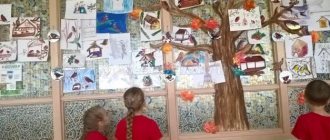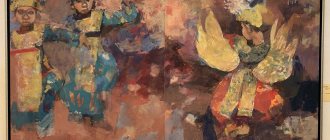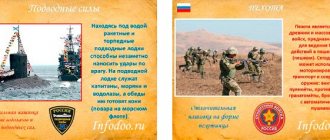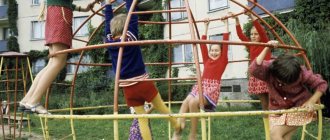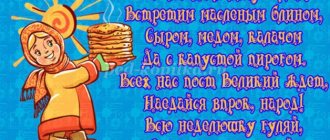Extracurricular event in the library “Nosov’s Stories”. Scenario for schoolchildren in grades 1-3
Scenario of the literary and game program “Reading the stories of N. Nosov” for children 6-10 years old
Author: Lutkovskaya Victoria Aleksandrovna, head of the branch, MUK "CSDB of Yaroslavl" children's library-branch No. 5, leisure.
The material will be useful to class teachers and librarians.
Event for students in grades 1-3. Aimed at updating knowledge about the works of N.N. Nosova, attraction to reading.
Scenario of a literary and gaming program for children 6-10 years old
Goal: to attract children to read the classics of Soviet children's literature and to study the works of N.N.
Nosova. Objectives:
Educational: expand students’ knowledge about the life of Nikolai Nosov, introduce them to the texts of the stories “The Living Hat”, “Patch”, “Mishkina Porridge”. Educational: to cultivate a love of reading, diligence, accuracy. Developmental: develop memory, attention, logical thinking.
Material:
two hats, 2-4 potatoes, paper “laces”, silhouettes of pants and patches and cords according to the number of children, disposable tableware: two cups, spoons according to the number of children, mixture for making porridge for babies, salt, sugar.
Decor:
book exhibition “Heroes of Nikolai Nosov”.
Progress:
Leader. Hello guys. Take a look at our book exhibition. Today there are books on it by the wonderful children's writer Nikolai Nosov (we are showing a portrait). You may be familiar with this name, try to name the books of this author that you have already read (children name). First, let's get acquainted with the life of the writer himself. He was born on November 23, 1908, that is, more than 100 years ago. He was very inquisitive and a dreamer. And of course, such a person, before starting to write books, experienced a lot of interesting things. I will name what Nosov tried to become, and you show the profession with gestures. (Children stand next to the chairs and show.) Presenter. Nikolai Nosov, immediately after graduating from school, wanted to be a violinist, then a chemist, an artist, worked as a digger, a log driver, a brick factory worker, a photographer, an electrical engineer, a newspaper seller, a musician, a teacher, a trainer, graduated from the Institute of Cinematography and became a film director and children's writer. One of Nosov’s heroes searched for himself for just as long. Maybe you can name him? (Children. Dunno.) You can show a doll or a fragment of a cartoon. Leading. This is one of the most famous heroes. Although he and other heroes of the Flower City had prototypes invented by the Canadian writer Palmer Cox. There are about forty characters in books about brownie people, among them there is a character named Dunno. Probably Nikolai Nosov also came across this book, and he came up with his own adventures for his favorite characters. Competition “Name the heroes of the book “The Adventures of Dunno and His Friends.” We divide the children into two teams and ask them to take turns calling out the names of the characters. The team where the children named the most names wins. Leading. Books about Dunno are some of the most famous in Nosov’s work. Cartoons were created based on “The Adventures of Dunno and His Friends,” “Dunno in the Sunny City,” and “Dunno on the Moon.” Competition "Connoisseurs". We offer small fragments from these cartoons for viewing and ask them to determine which book the fragment belongs to. The team where the children gave the most correct answers wins. Leading. But before “The Adventures of Dunno,” books about guys like you were born: “The Cheerful Family,” “The Diary of Kolya Sinitsyn,” “Vitya Maleev at School and at Home.” We will dwell in more detail on the funny stories from the collections “Dreamers” and “Knock-Knock-Knock”. I invite you to listen to the story “The Living Hat.” We read and discuss the content of the story: who are the heroes, what happened to them, why did the hat move? Competition "Living Hat". Participants from each team take turns throwing potatoes into their hats. We count the number of hits. The team in which the children hit more often wins. Leading. Another story that we will get acquainted with today is “Patch”. We read aloud, you can ask the children to read by role.
After reading, the presenter asks questions about the content of the story: what was the name of the hero, what color were the pants, what shape was the patch?
Teams can be given extra points for correct answers. Competition "Patch" - lacing. We give the children cardboard pants with holes and a cardboard patch with corresponding holes. We ask the children to “sew up” the hole. Pass the cord through all the holes. The team where all players completed the task faster will win. Leading. The last story we will read today is “Mishkina Porridge”. We read and discuss. Leading. What did the children do all day? What fish did they catch? How many? “Catch a Fish” relay competition. The teams stand in columns. In front of them are two inflatable pools with fish from fishing sets. Players take turns running up to the pools with a fishing rod, catching fish, and returning to their teams. The team in which the children completed the task faster and caught more fish wins. Leading. What was the name of the last story? Why? Competition "Mishkina porridge". We select one participant from the teams using a counting machine. He “cooks” the porridge (in a disposable container he cooks it from baby formula for making porridge, adding water, sugar and salt). All children receive two disposable spoons and taste both samples of porridge (without knowing who prepared which), voting for one of the samples. The team with the tastiest porridge will win. We summarize the results of the competitions, reward the winners, remember the titles of the works we read and the biography of their author. We give children the opportunity to read books from the exhibition. We say goodbye.
We recommend watching:
Literary game based on Kipling’s fairy tale “Rikki-Tikki-Tavi” for elementary school Literary game for primary schoolchildren of 4th grade with a presentation Literary game with presentation based on Kipling’s book “Mowgli” for 3rd grade Extra-curricular event in the library “Day of Accord and Reconciliation. One Hundred Years of the Great October Social
Similar articles:
Dedication to readers in the library, 1st grade. Scenario
Literary game in elementary school based on Andersen's fairy tales
Progress of the theatrical action:
the group at the door :
- Good afternoon! I suggest purchasing tickets to our interesting performance! I exchange one ticket for one polite word!
All guests are in their places. The performance begins. on stage : Hello, dear viewers! We invite you to N. N. Nosov’s “ Dunno and His Friends ”
We present to your attention the story
“How
Dunno was a musician. ” To the music, the heroes appear in the group . The train performs movements one after another in the dance. They take their places in their rooms.
Narrator: In one fairy-tale city there lived short people. They were called shorties because they were very small. It was very beautiful in their city. And the city itself was called the Flower City. On the streets of this city there were houses in which babies and toddlers lived. The kids always wore long trousers untucked, and the little ones loved to wear dresses made of bright fabric and braid ribbons into their braids. (the girls at this time tie ribbons to each other and show off bright dresses)
Our heroes also lived in the same house on Kolokolchikov Street: the smartest kid Znayka, Doctor Pilyulkin, the mechanic Vintik, the musician Guslya and other little ones, but the most famous throughout the city was a kid named Dunno . He didn’t know how to do anything, liked to disturb everyone and didn’t want to learn. He wanted to be able to do everything without any difficulty, and without this, even the smartest little guy couldn’t succeed.
Toddlers and little girls loved music very much, and Guslya was a wonderful musician. Everyone listened to the music and praised him very much. Dunno was jealous that Guslya was being praised, so he began to ask him:
Dunno : Teach me to play. I also want to be a musician.
Guslya: Learn! What do you want to play?
Dunno : What is the easiest thing to learn?
Guslya: On the balalaika.
Dunno : Well, give me the balalaika here, I’ll try it.
(Guslya gives him a balalaika. Dunno strums the strings. A recording of the sound of a balalaika sounds)
Dunno : No, the balalaika plays too quietly. Give me something else, louder.
(Guslya gives him a violin. Dunno plays the bow on the strings. A recording of the violin sounds)
Dunno : Isn’t there anything even louder?
Guslya: There is still a trumpet
Dunno : Let's try it here.
(Guslya gives him a trumpet. Dunno blows into a trumpet . A recording of the sound of a trumpet sounds)
Dunno : This is a good tool! Plays loud!
Guslya: Well, learn the trumpet if you like.
Dunno : Why should I study? I can do that too!
Guslya: No, you don’t know how yet.
Dunno : I can, I can! Listen here! (blows into a trumpet)
Guslya: You just trumpet and don’t play.
Guslya: Oh, you! It doesn’t need to be loud, but it needs to be beautiful!
Dunno : That’s how I do it beautifully.
Guslya: And it’s not at all beautiful. You, I see, are not at all capable of music.
Guslya: Nothing like that. Take the trumpet and play as much as you want, let them praise you too.
Dunno : Well, I’ll play!
( Dunno began to blow the trumpet , the trumpet blared. Guslya listened, covered his ears with his hands and left. To the sound of the trumpet, Dunno walked around the stage and returned to the room).
Narrator: In the evening, when all the kids were gathered at home. Dunno again took up the pipe and began to blow into it as much as he could:
Baby 1: What's that noise?
Dunno : This is not noise. This is me playing.
Znayka: Stop it now! Your music makes my ears hurt!
Znayka: But I don’t want to get used to it. I really need it!
Vintik: Stop it! Get out of here with your nasty pipe!
Dunno : Where should I go?
Znayka: Go to the field and play there.
Dunno : So in the field there will be no one to listen.
Znayka: Do you really need someone to listen?
Dunno : Definitely.
Little 2: Well, go outside, the neighbors will hear you there.
Since then Dunno stopped playing the trumpet.
Script for a theatrical production for children in the middle group “The House That Jack Built” Script for a theatrical production for children in the middle group. As part of the theater week, a production of the work was prepared and drawn.Quest game dedicated to Children's Day "Dunno and his friends" Entertainment for children 3-7 years old on the street dedicated to June 1 "Dunno and his friends" Goal: to promote children's creative expression, formation.
Scenario for a theatrical production for children of senior preschool age “The Tale of a Stupid Mouse in a New Way” Objectives: 1. Maintain children’s interest in theatrical productions; 2. Reveal the creative potential of children, give them the opportunity to realize their potential.
Scenario of a theatrical production for teachers of preschool education “The Tale of Good and Evil” Scenario of the theatrical production “Tale of Good and Evil” Participants: teachers of preschool education Voice behind the “frame” Good and Evil have been leading their way for a long time.
Script for a theatrical production for Mother's Day in the middle and senior groups. Script for staging the fairy tale "Magpie Belobok" for children in the middle group. Characters. Storyteller: Magpie Belobok: Bunny: Chanterelle: Squirrel:.
Scenario of a theatrical production based on the Russian folk tale “Teremok” for children of the first junior group Purpose: to create conditions for the creative development and self-realization of parents and children of the group. A non-traditional form of interaction between preschool educational institutions and
Scenario of the theatrical production “The Tale of Why the Tomato Turned Red” with children of the middle group. In the center of the hall there is a screen, a house, a fence. On the screen is a poster drawn by children. “Vegetables”, “Crow”, “Mistress”, “Storyteller”, balalaika solo.
Script for a theatrical production for Santa Claus's birthday for children in the middle group Script for a theatrical production for "Santa Claus's Birthday" for children 4-6 years old who are starting to study in a theater studio. I wrote it specifically.
Theatrical performance “Dunno and His Friends” EDERAL STATE EDUCATIONAL INSTITUTION SECONDARY EDUCATIONAL SCHOOL No. 6 STRUCTURAL DIVISION Theatrical.
Source
